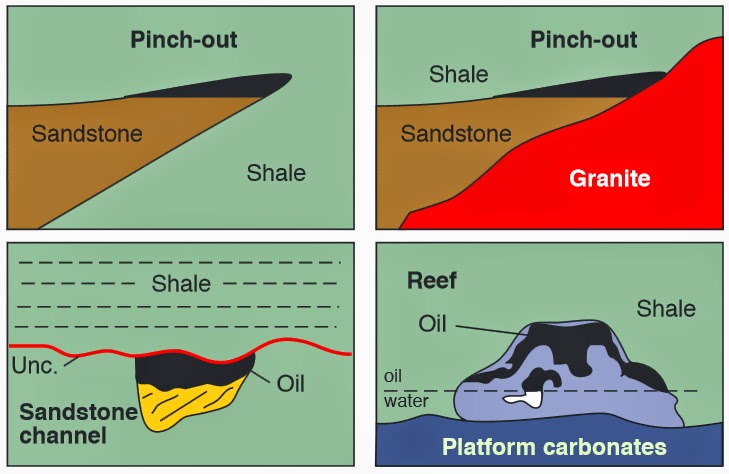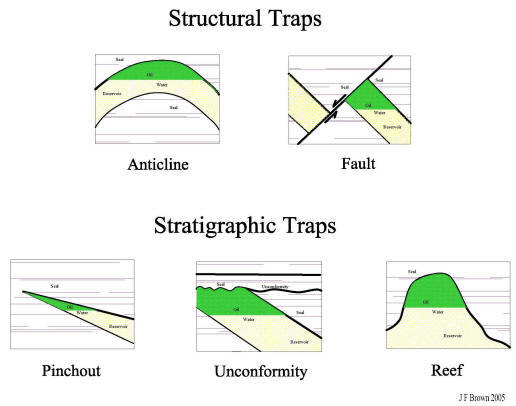Which of the Following Is a Typical Oil Trap
Heater rock beneath the source rock to heat the oil and give it buoyancy. Technician B says most hones are self-tensioning which alleviates the need for the technician to determine the amount of tension needed.
You can determine the issue by inserting a pole in the compartment.

. Oil and gas trapped in the anticline. The captured grease and oils fill the trap from the top of the fluid water down the de-greased water flows out of the bottom of the grease trap. It will give you an idea of the grease traps depth.
Most grease systems have a trapped grease indicator which indicates the level of trapped grease. OilTrap cells have a distinct advantage over the average EC cell. Fracture system connecting the reservoir rock to the Earths surface so that the oil can move freely upward b.
Fractured limestone or poorly cemented sandstone would be good. Cross section of an oil trap. A separating vessel may be referred to in the.
In this case the intersection of the oil-water contact with the cap rock determines the edges of the reservoir. These traps are formed as a result of the deposition in sedimentary rocks. On the other hand inflation tends to fall in tandem with falling oil prices.
Must lie beneath the reservoir rock in a trap to keep oil from filtering downward. Structural traps are formed by deformation of reservoir rock such as by folding or faulting. The grease and oils are trapped inside the grease trap by using a system of baffles or plates.
Another typical grease trap issue is a bad smell. A salt dome trap is shown on the lower left of Figure 1. Filter rock between the source and the reservoir rock to remove impurities d.
Is a necessary ingredient of an oil trap. What is the oil trap and why we use it in split air conditioning system. Unconformity.
It is related to sediment deposition or erosion and is bounded on one or more sides by zones of low permeability. Has high porosity and high permeability. As oil prices climb inflation tends to follow in the same direction higher.
A typical source rock of oil which started out as mud in which dead organic matter settled is A. Which of the following is a typical condition caused by cylinder glazing. Stratigraphic traps are formed by deposition of reservoir rock such as river channel or reef or by erosion of reservoir rock such as an angular unconformity.
Unconformity lens pinch-out It is important to remember that oil is not all by itself in some sort of underground cave but is instead contained within solid rock - which has enough room within it to actually soak. The most common type of structural trap is formed by an anticline a structure with a concave as viewed from below roof caused by the local deformation of the reservoir rock and the impermeable cap rock. The coagulated particles heavy metals and organics float to the surface in a tank following the ElectroPulse processing where they are removed with a sweep leaving clear water ready for recycle or discharge.
Oil prices and inflation are connected in a cause-and-effect relationship. The oil trap shown here is an _____ an anticline fault trap stratigraphic trap salt dome trap. In some cases oil may accumulate without closure.
There are numerous classifications of traps depending on their relationships with the reservoir lithology rock. A second major class of oil traps is the stratigraphic trap. Oil is trapped in fracture porosity adjacent to fault plane Hydrodynamic Traps If porewater flow in a sedimentary basin is strong enough the oil-water contact may deviate from the horizontal because of the hydrodynamic shear stress that is set up.
Question 1 1 1 pts A seal rock. Anticline fault salt Stratigraphic trap types. تعمل Oil Trap فى دوائر التكييف على.
Oil and gas that flows through the reservoir rock will come to rest when it reaches the salt dome and is then trapped. Oil and gas fill the pores vugs and fractures in reservoir rocks. Flow of fresh meteoric water down through oil-bearing rocks.
There are a variety of geologic traps which themselves can be broken into categories. An anticline fault natural stratigraphy syncline. Trap that prevents the oil from reaching the Earths surface c.
Classification of types of Oil and Gas accumulations and Traps. Which of the following is least likely to contain an oil trap. The foul odor is a result of the following.
Because tectonics ultimately control deposition and erosion however few stratigraphic traps are completely without structural influence. Which of the following is not a stratigraphic oil trap. The term separator in oilfield terminology designates a pressure vessel used for separating well fluids produced from oil and gas wells into gaseous and liquid components.
Usually not the entire reservoir but only its part called trap is filled with petroleum. Two types of petroleum traps are. Up to 24 cash back Stratigraphic trap.
X Y and Z represent three distinct fluid layers within the permeable reservoir rock. A separator for petroleum production is a large vessel designed to separate production fluids into their constituent components of oil gas and water. US1397892A US453689A US45368921A US1397892A US 1397892 A US1397892 A US 1397892A US 453689 A US453689 A US 453689A US 45368921 A US45368921 A US 45368921A US 1397892 A US1397892 A US 1397892A Authority US United States Prior art keywords oil trap float members floating Prior art date 1921-03-19 Legal status The legal status is an assumption.
Is commonly made of fractured limestone or poorly cemented sandstone. When the sediment that creates the reservoir rock is deposited in a discontinuous layer the seals are created. Technician A says a good crosshatch helps to trap the oil and retain it in the cylinder bore where it is needed.
Thats the case because oil is a major input in the economy and if input costs rise so should the cost of end. If the pole hits the bottom you can conclude that a speedy pumping of the grease trap should be conducted.



Comments
Post a Comment